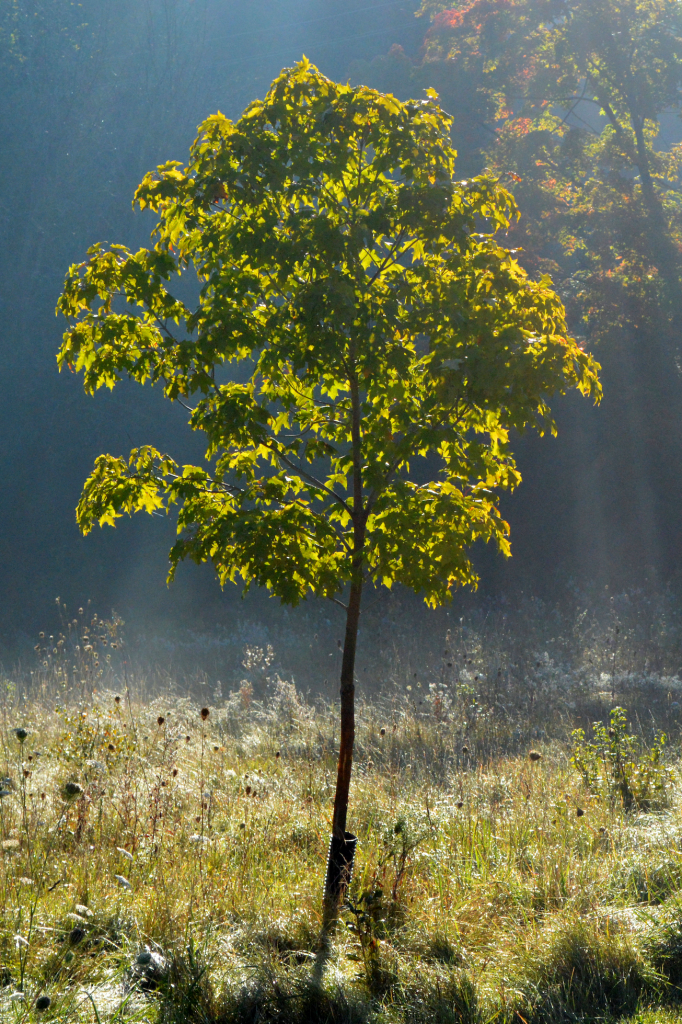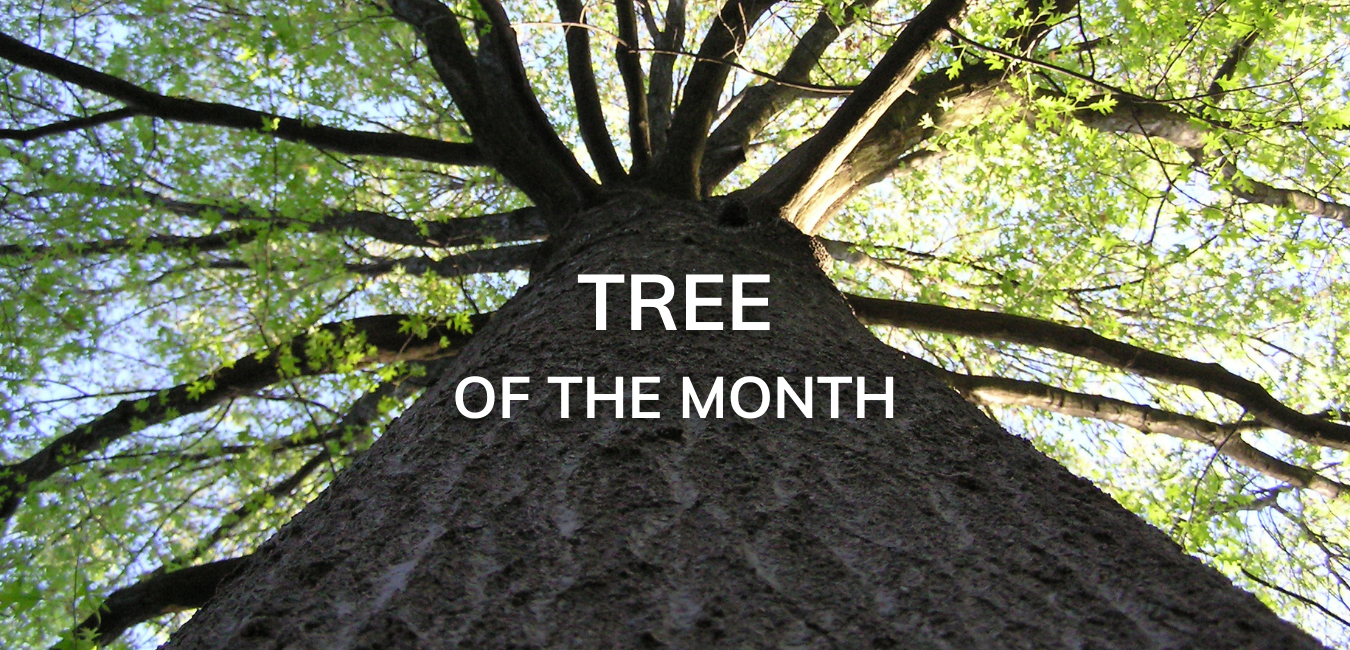
Canada’s national tree, the Sugar Maple is arguably one of the most well-known Canadian icons. From our flag to maple syrup, beautiful fall colours and hockey teams, Sugar Maples do us proud. The Sugar Maple is one of the most recognized tree in Canada, but can you tell it apart from its non-native, invasive cousin, the Norway Maple? The Sugar Maple has characteristic 3 or 5 lobed, green leaves in the summer which morph into a blaze of reds, yellows, oranges, and browns in the fall. An extremely hardy tree if properly taken care of in its early stages, the Sugar Maple can be a stunning attraction to any yard.
The Sugar Maple can be identified by its bark, simply by looking to see if the bark curls in an east to west fashion (curls at the sides). The fruit of the Sugar Maple are seed cases with wings that fall from the tree in a ‘helicopter’ form. At maturity, this tree will reach heights between 25 and 35 metres tall (82-115ft), with some rare exceptions reaching up to 45 metres (148ft). Sugar maples have a tendency to make up a large portion of the old growth forests.
The Sugar Maple is often confused with the Norway Maple because the leaves look very similar. The Sugar Maple is a great native species, but the Norway Maple is an invasive, non-native tree that should not be planted in London. One easy way to tell the difference between a Sugar Maple and a Norway Maple is to take off a leaf. If the sap that comes out of the stem is a milky white, it is a Norway Maple. If it is clear, it is a Sugar Maple.
Want to plant one?
Sugar maples prefer a moist soil, but are not particular about the amount of sunlight it gets. It can grow in either shaded or sunny areas but should be kept out of reach of grazing/browsing animals such as rabbits and deer. Due to its slow growth rate, many pruning practices can be implemented to ensure the tree grows in a health and desired fashion.


